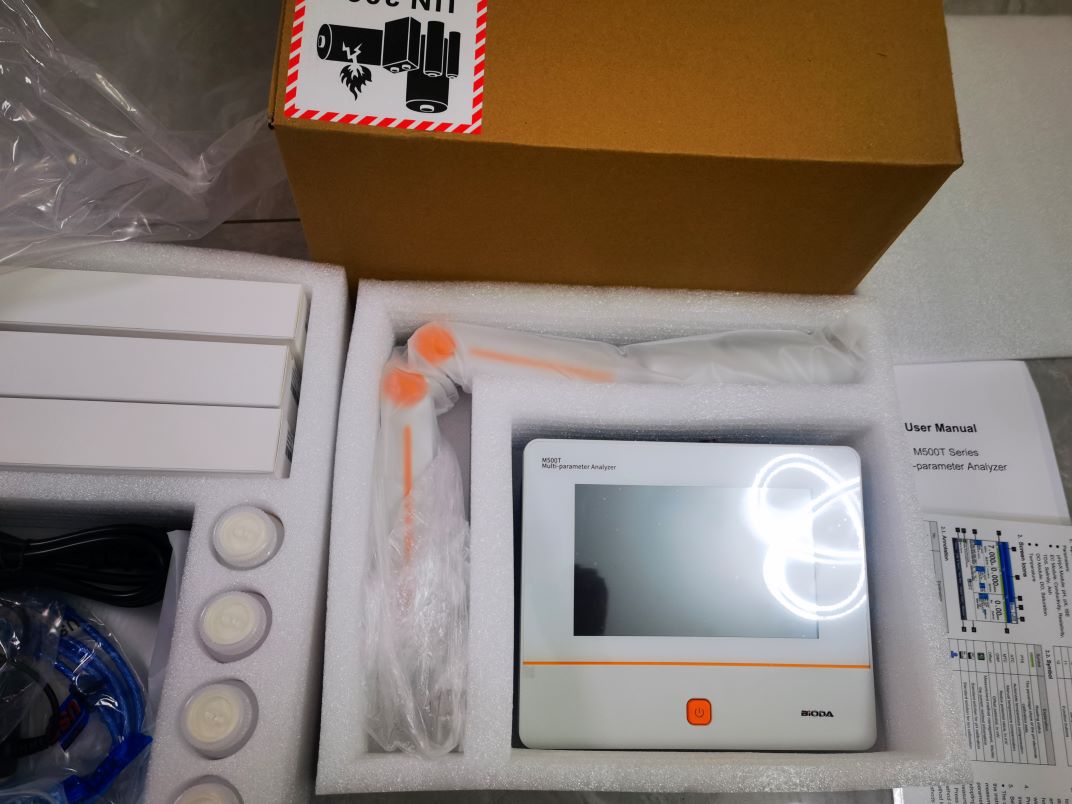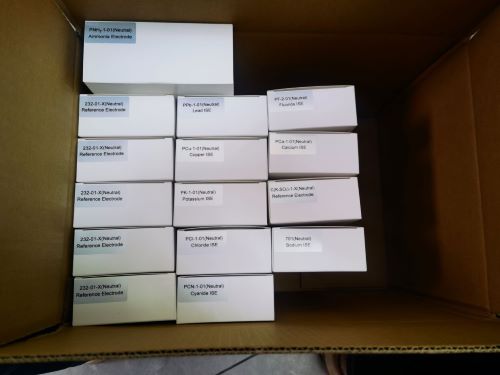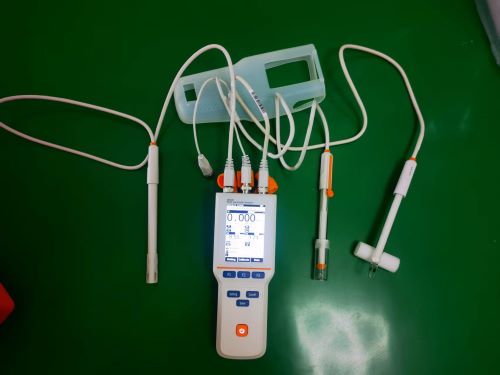What Is Water Analyzer?
What Is a Water Analyzer?
A water analyzer is a device that measures and analyzes various properties of the physical, chemical, and biological properties of water. Usually it can test pH, TDS, Conductivity, Salinity, Temperature, Dissolved oxygen(DO), and some ion parameters such as Sodium (Na+), Fluoride (F-), Ammonia(NH3), Fluoride (F-), Chloride (Cl-), Potassium (K+), Calcium (Ca2+), Cupric (Cu2+), Lead (Pb2+), Nitrate (NO3-), Perchlorate (ClO4-) etc.
It's widely used in Environmental Monitoring, Drinking Water Treatment, Wastewater Treatment, Aquaculture, University Lab, Industrial Manufacturing etc. It's focused on ensuring water quality and safety
How Does a Water Analyzer Work?
The working principle of the water quality multi-parameter analyzer is mainly based on electrochemical, optical and other sensing technologies. The water quality parameters are converted into electrical signals through sensors, and then analyzed and calculated by the data processing unit to finally obtain the values of the water quality parameters.
Types of Water Analyzers
1.Based on Measured Parameters:
✅pH Meters:
Measure the acidity or alkalinity of water.
Essential for various applications, from environmental monitoring to industrial processes.
✅Conductivity Meters:
Measure the ability of water to conduct electricity, indicating the presence of dissolved salts and minerals.
Used to assess salinity and total dissolved solids (TDS).
✅Dissolved Oxygen (DO) Meters:
Measure the amount of oxygen dissolved in water.
Crucial for monitoring aquatic environments and wastewater treatment.
✅Turbidity Meters:
Measure the cloudiness or clarity of water, indicating the presence of suspended particles.
Important for drinking water treatment and environmental monitoring.
✅Chemical Analyzers:
Measure the concentration of specific chemicals, such as:
Chlorine
Ammonia
Nitrates
.
.
.
These can range from simple test kits to sophisticated laboratory instruments.
2. Based on Deployment:
✅Portable Analyzers:
Handheld devices for on-site testing.
Ideal for field work and quick water quality assessments.
✅Benchtop Analyzers:
Laboratory instruments for precise and detailed analysis.
Used for in-depth research and quality control.
Test Kits:
Chemical reagents and test strips for simple, rapid analysis.
Often used for basic water quality checks.
Key Features to Look for in a Water Analyzer
1. Accuracy and Precision:
Accuracy: How close the measured value is to the true value.
Precision: How consistently the analyzer produces the same result under repeated measurements.
These are paramount for reliable data. Look for analyzers with specified accuracy and precision ranges.
2. Measurement Parameters:
Ensure the analyzer measures the specific parameters you need (pH, conductivity, DO, turbidity, etc.).
Consider whether you need a single-parameter or multi-parameter analyzer.
The range of each parameter the device can measure is also important.
3.Portability and Ease of Use:
Portable vs. Benchtop/Online: Choose the appropriate type based on your application.
User Interface: Look for an intuitive interface with clear displays and easy navigation.
Calibration: Consider the ease of calibration and the frequency required.
Data Logging and Storage: If needed, ensure the analyzer has sufficient data storage and logging capabilities.
4. Durability and Reliability:
Construction: Look for a robust and durable design, especially for field applications.
Environmental Resistance: Ensure the analyzer can withstand the environmental conditions it will be exposed to (temperature, humidity, etc.).
Maintenance Requirements: Consider the ease of maintenance and the availability of spare parts.
5.Connectivity and Data Transfer:
Data Output: Check for compatible data output options (USB, Bluetooth, Wi-Fi) for easy data transfer.
Software Compatibility: Ensure the analyzer is compatible with your data analysis software.
Remote Monitoring: If needed, consider analyzers with remote monitoring capabilities.
6.Calibration and Maintenance:
Calibration Frequency: How often does the device need to be calibrated?
Calibration Solutions: Are they readily available?
Maintenance Procedures: How easy is it to maintain the device?
7.Sensor Quality:
The quality of the sensors within the device is vital to its accuracy.
Consider the lifespan of the sensors, and how easy they are to replace
8. Compliance and Certifications:
If regulatory compliance is required, ensure the analyzer meets the necessary standards and certifications.
Best Water Analyzers in 2025
✅ M500T Touchscreen Benchtop Water Quality Analyzer
 |  |
✅ M310F portable water multiparameter analyzer

FAQs About Water Analyzers
Q1: I want to test pH, EC, Salinity in water, for field work, any suitable product?
- M310F-A multi-parameter can meet demands, it can test all parameters required, portable type is suitable for on-site working
Q2: How often should I calibrate my water analyzer?
-We calibrate machine well before leabing factory, customer can directly use it for first time. Following calibration frequency depends on the specific analyzer and its usage. Generally, it's recommended to calibrated regularly, especially before important measurements.
Q3:What is Dissolved Oxygen (DO) and why is it important?
- DO is the amount of oxygen that is dissolved in the water. It is very important to aquatic life, and is a key parameter to measure when testing water that will contain living creatures.
Q4: If your water multiparameter can test turbidity too?
- No, turbidity meter is a seperate machine.
We have different types turbidity meter for low and high turbidity level. Benchtop and portable type are avaialble. ? View here
Q5: Can a water analyzer detect bacteria?
-Some advanced analyzers can detect bacteria and microbial contamination using ATP. However, most standard analyzers do not detect bacteria
Q6: Request for quotation Water Testing Equipment’s digital testing kit for the Water Parameters like Nitrate and chlorine.
-No problem, ion meter + Nitrate electrode + chlorine electrode is ok
Q7: What are the types of water analyzers?
? Portable Water Analyzers – Handheld devices for on-site water testing (e.g., home water testers, lake, sea).
? Laboratory Water Analyzers – High-precision instruments for lab science research.
? Online/Continuous Water Analyzers – Used in industries and water treatment plants for real-time monitoring.
Q8: What are the common parameters measured by water analyzers?
Common parameters include pH, conductivity, dissolved oxygen (DO), turbidity, chlorine, heavy metals, BOD, COD, heavy metals, and various chemical compounds
Conclusion
In conclusion, water analyzers are indispensable tools for ensuring water quality across a multitude of applications. From safeguarding public health in drinking water treatment to protecting delicate ecosystems in environmental monitoring, their role is paramount.
Investing in the right water analyzer and understanding its proper use are crucial steps in ensuring a sustainable and healthy future.

